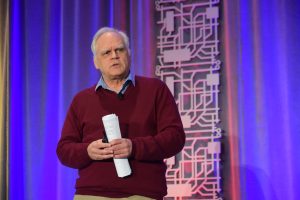As the wood mid-rise market takes off in Ontario, one challenge designers and builders face is finding the best-priced pre-engineered wood products for their assembly.
Another challenge is finding products that will work for that assembly.
"A great price can come with no services but on these jobs, you might want something different — a little extra involvement (from your supplier)," said Andy Teasell, engineering and technical services manager for Weyerhaeuser’s Trus Joist.
While more design professionals are choosing single layer gypsum board assemblies over two-board systems to save material and labour costs on fire-rated floor-ceiling assemblies, suppliers with technical expertise might illustrate how that single layer system can lead to unexpected costs, Teasell said at a seminar at the Toronto Wood Solutions Fair.
For example, most I-joist types are not permitted in single layer systems and the top and bottom side flanges have to be a nominal two-by-four size — thicker than two-layer systems. Also, the vertical web has to be thicker and more expensive mineral wool, not fibreglass batts, is required, he told delegates at his seminar on wood mid-rise products.
By comparison, two-layer fire-rated systems "easily clear an hour," which opens the door to a variety of I-joist types.
Determining which assembly is best is not always straightforward. Teasell cited a project of three five-floor mid-rises totalling 260,000 square feet as a case in point. While material and labour costs for two gypsum layers was about $105,000 more than a single layer, the double layer required smaller I-joists, a savings ranging from $47,000 to $200,000. That range is based on such variables as span size.
"You could pay more for a double layer if the project has a lot of long spans or you could save about $120,000 with two layers," if spans are short, he said, adding designers should confer with the structural engineer and acoustical consultant early on to avoid costly redesigns later.
An additional $26,000 was saved on insulation when two gypsum layers were specified.
Teasell told delegates there can be "quite a big difference" in the traits of rim board options for a project which include OSB, LVL, LSL and PSL. Some rim boards, which carry vertical loads from studs, can take nailing, others can’t. Furthermore, nail spacing requirements vary from product to product.
Also, some products such as LVL can "cup" from extensive moisture.
LVL does stabilize when dry, he said, but LSL is less apt to cup from moisture, making it "really good…as a rim board." OSB rim boards are an alternative if they meet nailing requirements.
He told delegates that many specifications require 3-1/2 inch thick rim boards for lag screw connections to upper wall plates. While two thinner rim boards can be used, installing lag screws near the joint between the plies may be an inadequate connection. Often one thicker rim board is preferable, he said.
To improve the capacity of wall plates, he said while LSL is supplied dry and stable — minimizing shrinkage — in a wet climate it might be susceptible to shrinkage. All LSLs are not the same, "so make sure you select the right grade," he added.
He also cautioned specifiers from selecting wall board solely based on price because some cheaper grades can’t take tight nailing, every two or three inches on centre. He said changing the wall plate specified can increase vertical load capacity up to 30 per cent.
"LSL…will give you better load-bearing values than comparable lumber," he added.
Teasell said there is a trend to specifying large bolt-free beams rather than bolting multiple plies.
"It is a quicker, more reliable process," he said.
Recommendations include PSL, some thick LVLs or LSLs. But additional thickness comes at an additional cost to manufacture.
"Our message is if you want to be successful on these jobs ask good questions upfront," he said.



Recent Comments
comments for this post are closed